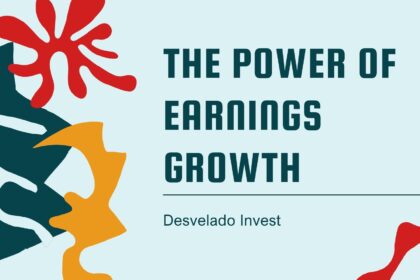Growth investing is a strategic approach that focuses on investing in companies with strong revenue and earnings growth potential. This strategy aims to capitalize on the growth prospects of these companies, seeking long-term capital appreciation
Understanding Growth Investing: An In-Depth Guide
Growth investing is a popular investment strategy aimed at capitalizing on companies that exhibit signs of above-average growth, even if the stock appears expensive in terms of metrics like price-to-earnings (P/E) ratios. Unlike value investors, growth investors seek companies that offer strong earnings growth prospects, which typically leads to increasing stock prices. This detailed guide explores the fundamentals of growth investing, including its defining characteristics, the strategies used, and the potential risks and rewards associated with this approach.
What is Growth Investing?
Growth investing involves investing in companies that are expected to grow sales and profits at a faster rate than the market average. This strategy is primarily focused on generating capital gains rather than income. Growth investors are typically not concerned with dividend paying stocks; instead, they are looking for companies that reinvest their earnings into expansion, research and development, or other areas that could lead to future appreciation in stock value.
Characteristics of Growth Stocks
Growth stocks are distinguished by several key characteristics:
- High Earnings Growth: These companies exhibit high growth rates in earnings per share (EPS).
- Reinvestment: They reinvest earnings in their business to fuel further growth, often at the expense of paying dividends.
- Market Leadership: Many growth companies are leaders in their industries or have unique products or services with competitive advantages.
- Higher Valuations: Due to their high growth prospects, these stocks typically trade at higher P/E ratios than the broader market.
Strategies for Growth Investing
Investing in growth stocks requires a different strategy compared to value investing. Here are some key strategies used by growth investors:
- Identify Emerging Trends: Successful growth investing often involves identifying and investing in key trends before they become mainstream. This could include technological innovations, demographic shifts, or changes in consumer behavior.
- Focus on Quality: Look for companies with solid management, good corporate governance, and clear competitive advantages.
- Look Beyond Price Metrics: While growth stocks often have high P/E ratios, growth investors focus more on future potential than on current price metrics.
- Maintain a Long-Term Perspective: Growth investing usually requires a longer time horizon to allow for the appreciation of investments as the company grows.
Risks and Rewards of Growth Investing
Rewards:
- Capital Appreciation: The primary reward of growth investing is significant capital appreciation. Stocks of high-growth companies can see rapid price increases as earnings rise.
- Compounding Returns: Companies that can continuously reinvest in themselves and maintain high growth rates can offer compounding returns over time.
Risks:
- Volatility: Growth stocks are generally more volatile than value stocks. They are more sensitive to market fluctuations and can decline sharply during economic downturns.
- Overvaluation: There is a risk of overpaying for growth stocks, especially in highly speculative markets. High expectations are already reflected in their stock prices, and any failure to meet these can lead to substantial price corrections.
- Lack of Dividends: Since growth companies often do not pay dividends, investors must rely solely on capital gains for returns, which are not guaranteed.
How to Start Growth Investing
For those interested in growth investing, here are some steps to get started:
- Education: Understand the basics of financial statements and what drives company growth.
- Market Research: Stay informed about market trends and emerging industries.
- Stock Screening: Use financial metrics to identify potential growth stocks.
- Diversification: While focusing on growth stocks, ensure to diversify your investments to mitigate risk.
- Continuous Monitoring: Keep a close eye on your investments and the market conditions, as growth stocks require timely decisions.
Conclusion
Growth investing is an aggressive strategy suited to those who are seeking substantial returns and are comfortable with higher levels of risk and volatility. By focusing on companies with potential for rapid growth, investors can achieve substantial capital gains. However, it is crucial to conduct thorough research and maintain a vigilant investment approach to navigate the complexities of growth investing effectively.





